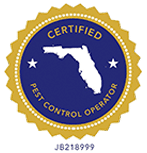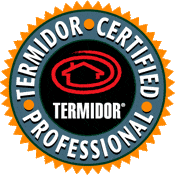Recent Articles
Spotlight on Silverfish
December is typically a month where we get many calls from Jacksonville area homeowners who are seeing silverfish in their homes. Silverfish (Lepisma saccharinum) is a small, wingless, insect that often invades our homes in search of warmth or moisture.
Do Holiday Lights Attract Bugs and Insects?
The holiday season is here and many enjoy lighting up their home and decorating the landscape. Most outdoor lighting today uses LED lighting which is more energy efficient and safer than incandescent lighting but, is there any improvement with LED in attracting insects? Basically, it depends on the insect.
The Odorous House Ant
The most common nuisance ant found in our Florida homes is the small, but mighty, Odorous House Ant (OHA).
Rodent and Pest Control This Fall and Winter
Fall is here and now is the time when insects and rodents are looking for new harborage.
The Ringlegged Earwig – a Beneficial Pest
The most common specie of earwig found in Florida is the ringlegged earwig (Euborellia Annulipes). They are wingless and prefer to live outdoors in moist areas under mulch, leaves, woodpiles, clogged gutters, or in dense vegetation. Earwigs especially like to live under landscape fabric in our landscape beds.
Spotlight on the German Cockroach
Blattella germanica (aka the German Cockroach) is found throughout Florida. Interestingly, this cockroach is rarely found away from human activity so it has a symbiotic relationship with humans.
Termite Contracts 101
Termite prevention and control contracts are often mistakenly referred to as “termite bonds”. Termite service contracts are actually “trade guarantees” and no different than any other service agreement you might receive from a trade contractor. They are not “bonds” as only a licensed surety company can issue bonds.
Spotlight On The Southern Chinch Bug
The southern chinch bug (Blissus insularis Barbar) is an insect pest of St. Augustine and Zoysia grasses throughout the state of Florida. This insect causes millions of dollars in damage to turfgrasses each year with infestations peaking in July.

















